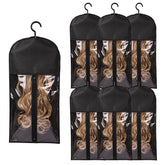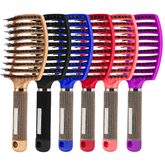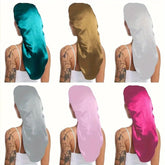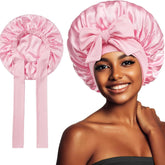Why the Shattered Fringe Is Winter's Coolest Haircut

The shattered fringe — a deliberately textured, feathered take on the classic bangs — has quietly become one of winter’s most talked-about haircuts. Less about precision and more about lived-in movement, it’s being favoured for its low-maintenance personality and flattering, face-framing versatility. This article explains what a shattered fringe is, why it’s trending now and practical tips to ask for in the salon and to style at home.
What exactly is a shattered fringe?
The term refers to a fringe cut with broken-up, choppy lengths rather than a blunt line. It’s created using slicing and point-cutting techniques to produce varied strands that skim the brow and blend into surrounding layers. The result is airy and imperfect: intentionally undone rather than polished. That relaxed edge makes it appealing for anyone who wants movement without daily precision styling.
Why stylists and clients are choosing it this season
Several practical reasons explain the surge in popularity. A shattered fringe suits a wide range of textures — from naturally straight to wavy and fine to medium-thick hair — because its texture-forward construction works with the hair’s natural fall. It’s also an attractive option for people who want a fresh look but dislike the upkeep of a blunt fringe: it grows out with character rather than an obvious line of demarcation.
Who it flatters — and who might want to think twice
Generally, the shattered fringe is versatile, but a few considerations help decide if it’s right for you:
- Face shapes: The broken lengths can soften a square jaw and add width to longer faces. Ask your stylist to tailor the length and density around your features.
- Hair texture: Wavy and fine hair types often benefit most because the cut adds apparent density and movement. Very thick hair can wear a shattered fringe well if thinned and layered to avoid heaviness.
- Styling time: If you prefer a mostly air-dried look and minimal morning fuss, this fringe is ideal. If you require a consistently blunt, uniform fringe for a dramatic look, this isn’t the best match.
How to ask your stylist — key terms and questions
Clear communication in the salon helps ensure you leave with a fringe that suits your lifestyle. Use these prompts when booking or during your consultation:
- Ask for a "shattered" or "textured" fringe instead of a blunt cut.
- Mention how you usually wear your hair (air-dried, blow-dried, curly) and how often you visit the salon for trims.
- Request point-cutting or slicing techniques to create broken lengths rather than a straight line.
- Discuss how it should blend into the rest of your haircut — seamless layering can make it more wearable as it grows out.
At-home styling: simple steps for lived-in texture
The shattered fringe is made for texture — you don’t need elaborate tools to style it. Try this quick routine:
- Towel-dry or roughly blow-dry the fringe until it’s 70–80% dry to retain natural movement.
- Apply a pea-sized amount of lightweight texturising product or sea-salt spray through the fringe and nearby layers.
- Scrunch gently with your fingers or use a small round brush to add subtle lift at the roots.
- Finish with a light mist of flexible hairspray or a dab of soft-hold pomade to separate strands and reduce flyaways.
Maintenance tips — keep it fresh without daily trims
Part of the appeal is the low-key upkeep, but a couple of small habits will keep the shape flattering as it grows:
- Book a tidy-up every 8–12 weeks to maintain the feathered shape if you prefer keeping the length defined.
- Use conditioning products on the mid-lengths and ends; lightweight formulas prevent the fringe from looking greasy or weighed down.
- Sleep on a silk pillowcase to reduce friction and keep the fringe from mattifying overnight.
Takeaway
The shattered fringe is a modern, wearable update to traditional bangs — easy to live with and adaptable to many hair types. It’s ideal for anyone seeking a softer, textured look with forgiving grow-out. Ask for texture-focused cutting techniques, use lightweight styling products, and plan occasional trims to keep the effect intentional rather than overgrown.
Explore More: Discover related reads from Hairporium — News • Guides • DIYs • Expert Articles.
Stay Updated: Read more UK hair industry news and innovations on Hairporium News.







